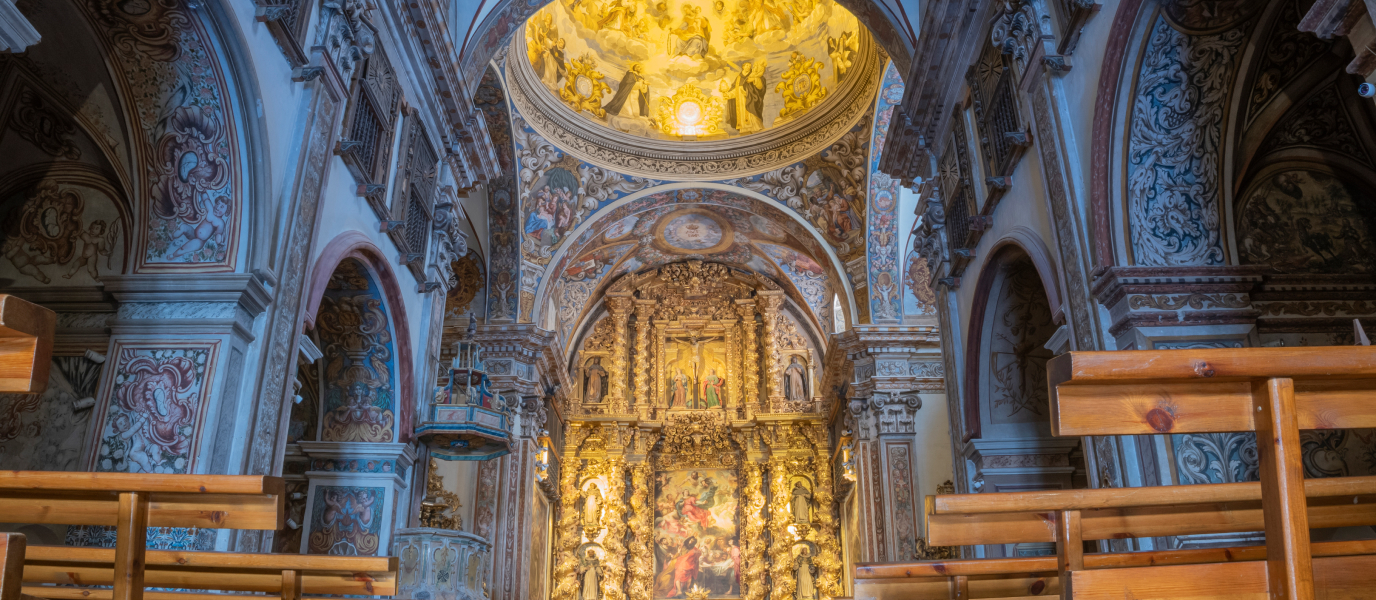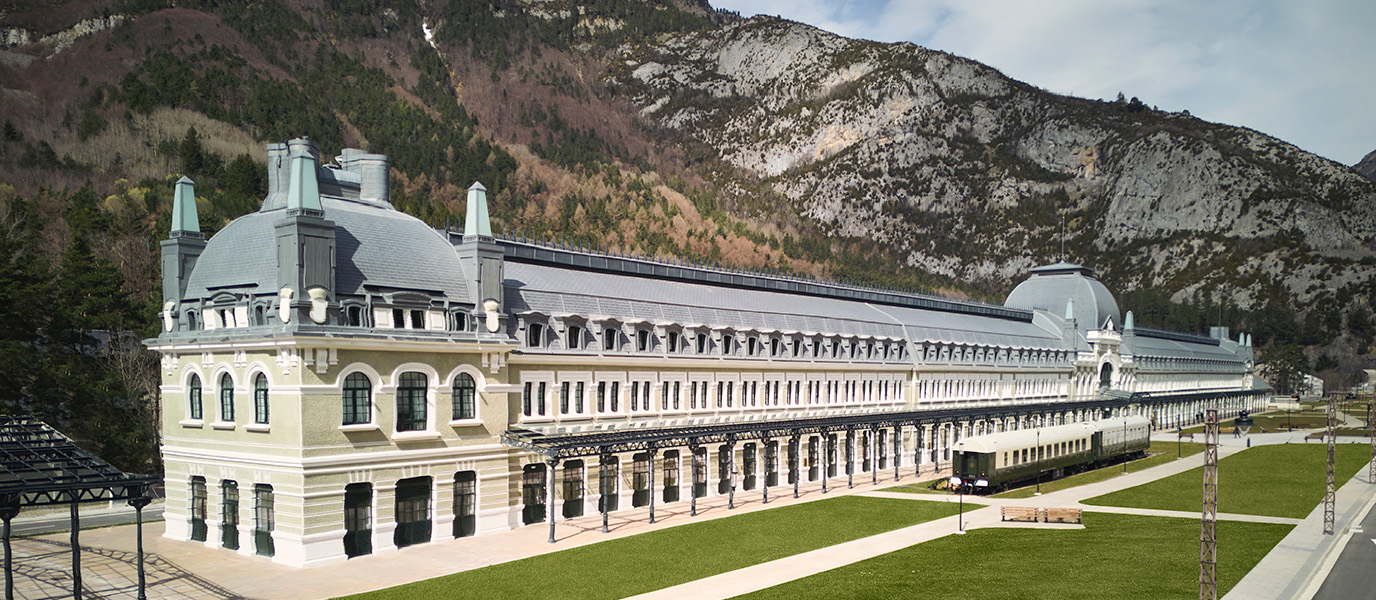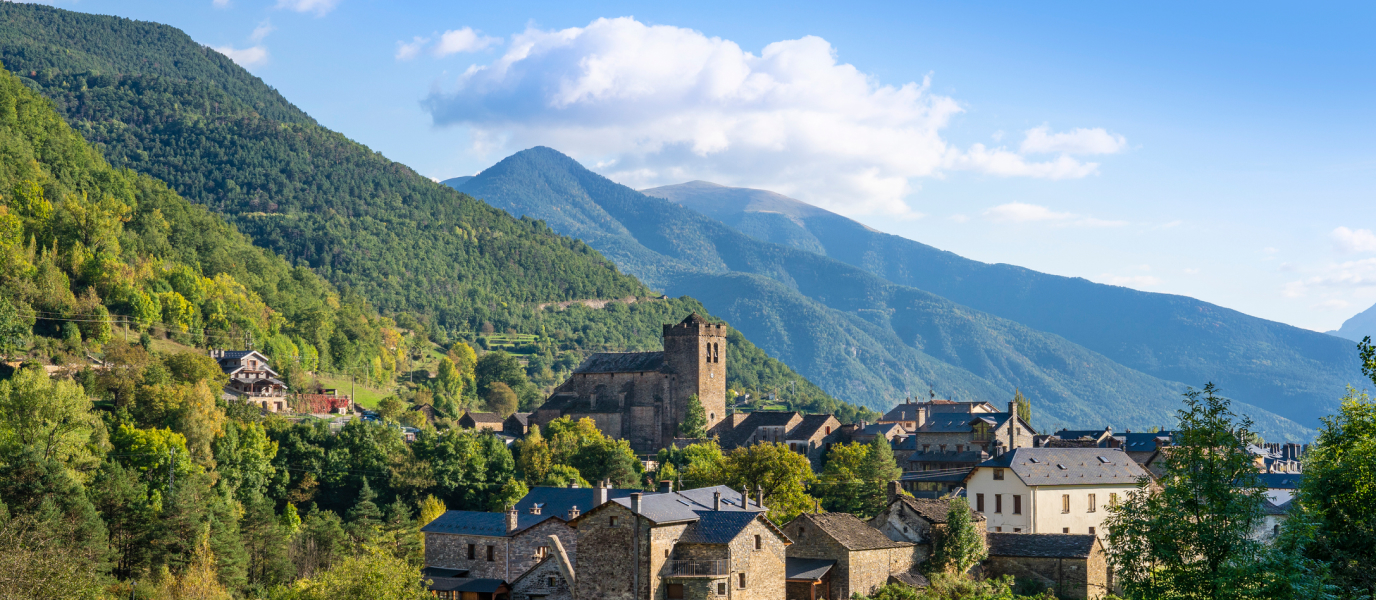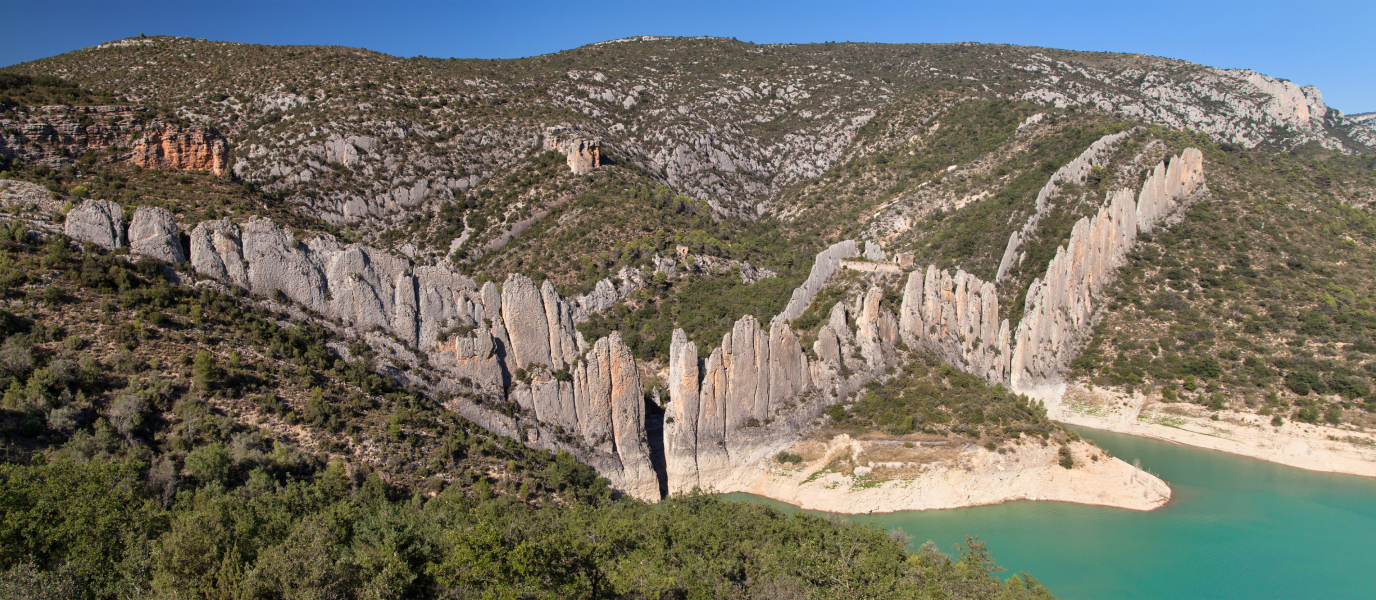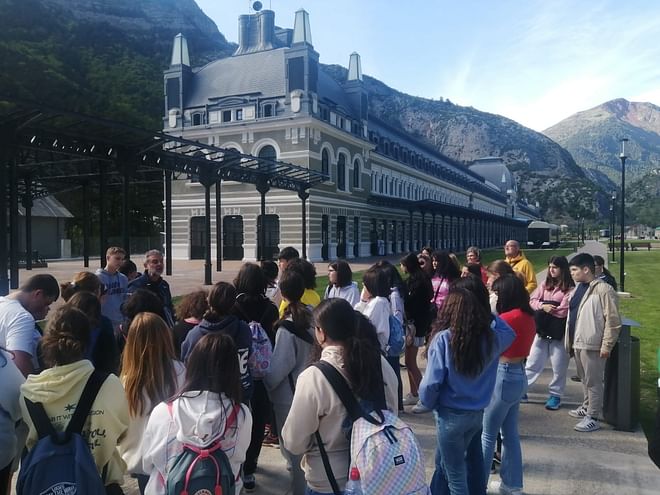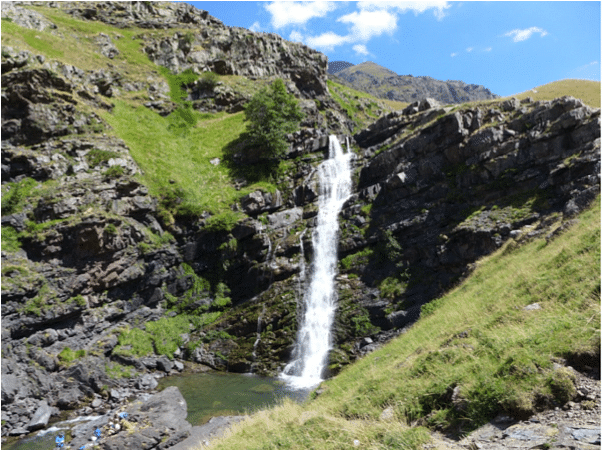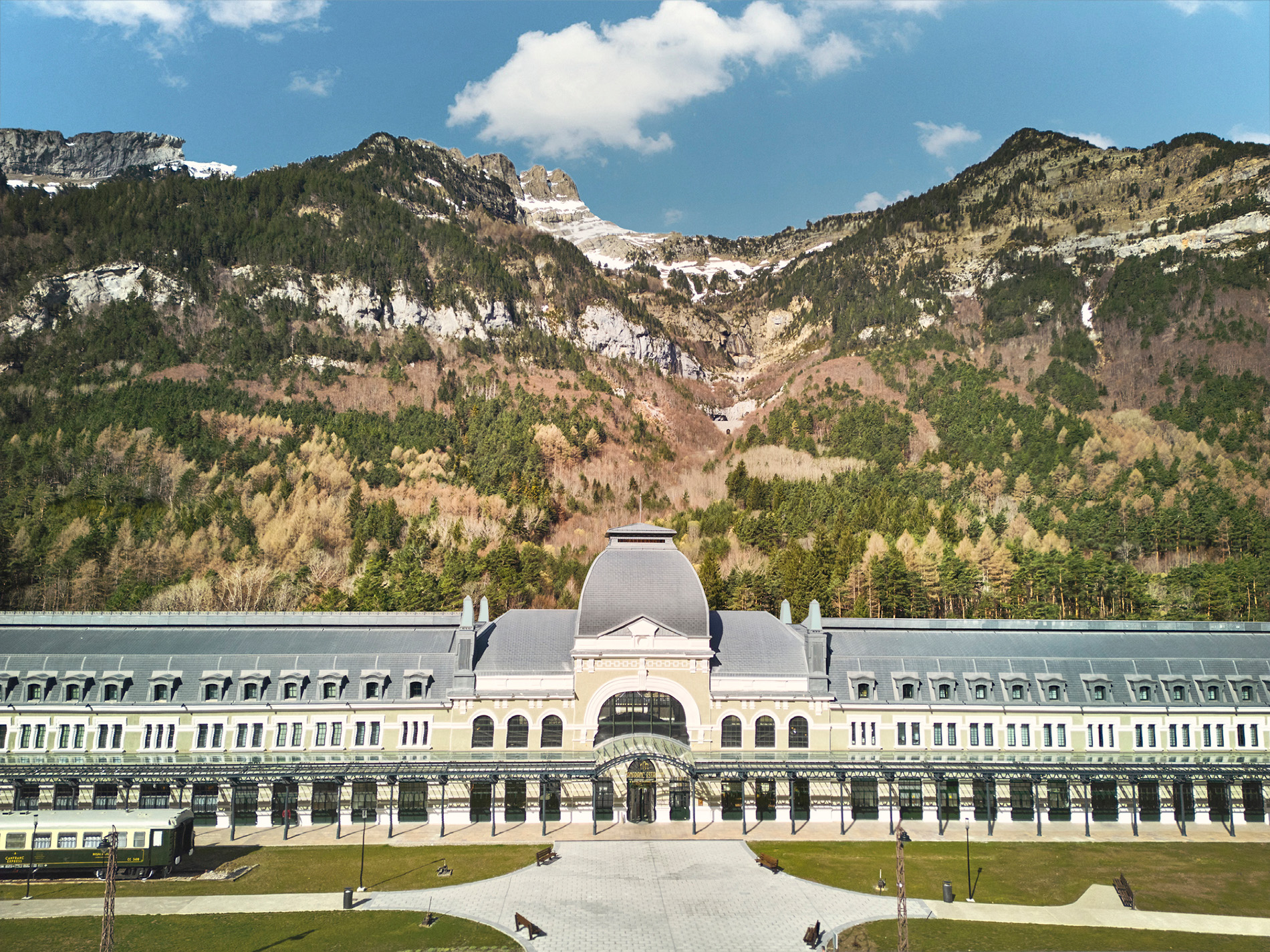Huesca Cathedral ―known officially as Santa Iglesia Catedral de Jesús Nazareno, in Spanish― dominates the urban landscape from the top of the hill on which the primitive city of Huesca (interal link) was built. Standing proudly in Huesca’s old town, this Catholic temple, built in a primitive Gothic style, is just a short distance from various other historic buildings of enormous value such as the Huesca Town Hall, the San Pedro El Viejo monastery and the San Miguel convent. Built between the 13th and 16th centuries on the foundations of an old Arab mosque, this cathedral has been the seat of the Diocese of Huesca since its very beginning. Huesca Cathedral therefore houses an impressive documentary collection that reflects its religious background, which can be visited in the Goldsmith’s and Medieval Art Rooms of its Diocesan Museum. Its beautiful main façade, whose appearance remains faithful to that of the early 16th century, and the inside of the building, brimming with noble chapels and presided over by an altar surrounded by religious imagery, are the two other main attractions that make the castle a must-visit landmark. Below we will give you more information about what to see in Huesca cathedral, when its opening hours are and when masses are held.
History of Huesca Cathedral
When Peter I of Aragón reconquered the city of Huesca ―known as Wasqa under Muslim rule― in 1096, the Christians found a huge mosque on top of the hill overlooking the city. Perhaps for the size and excellent condition of the structure, the Aragonese kings of the time allowed Christian worship to continue there for the following two centuries. It wasn’t until the reign of James I of Aragón, in the mid-13th century, that the old Muslim mosque was demolished and work began on the current cathedral. For three hundred years, the new building would follow the prevailing style in Europe: Gothic architecture. The annexed remains of the small Santa María de los Gozos church ―built one century prior to the cathedral― provide the only trace of Romanesque art anywhere in the complex.
What to see in Huesca Cathedral
Exterior façade and bell tower
The first thing you see upon arrival at Huesca Cathedral is its imposing main doorway, built in the early 14th century ―under the bishopric of Martín López de Azlor― in the early Gothic style.
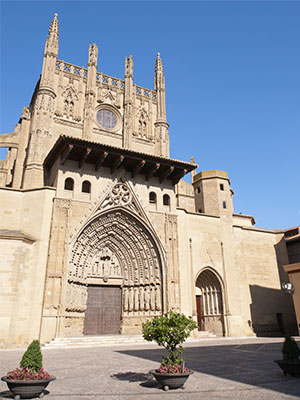
From what we can deduce from the documentation of the time, the architect was probably Guillem Inglés: an enigmatic figure of whom few details are known today. The decoration of the main doorway, framed by seven archivolts filled with various stone figures ―14 virgins, 10 angels and 8 prophets― is attributed to this architect. You can also see the coats of arms of Aragón and the bishop on one side of the doorway, and carvings of the Virgin Mary accompanied by the Three Wise Men on the other.
The other stand-out element is its bell tower, whose construction, which took place between the late 14th and early 15th century, was undertaken by the architects Juan de Alguiñero and Juan de Quadres. Interestingly, an imposing spire crowned the tower until the year 1937. Unfortunately, due to an accident that occurred during the Spanish Civil War, the spire was destroyed completely and the tower was left with a flat roof.
Chapels
Besides being a place of worship, Huesca Cathedral is also a funerary venue. This is revealed by the 14 chapels distributed around the cathedral’s aisles, housing tombs belonging to noble families who fronted the construction costs of the cathedral in exchange for the right of burial in the building. The Rosary chapel, with its impressive Gothic altarpiece; the Lastanosa chapel, dedicated to patrons of the Spanish Golden Age writer Baltasar Gracián; and the Columbario chapel, with 535 niches reserved for the urns of the faithful, are worth checking out.
We also recommend admiring the Romanesque remains of the old Santa María de los Gozos church, which is annexed to the north side of the main building. Besides the decorative elements typical of this architectural style, there are several examples of goldsmith work, musical instruments and mural paintings from the period.
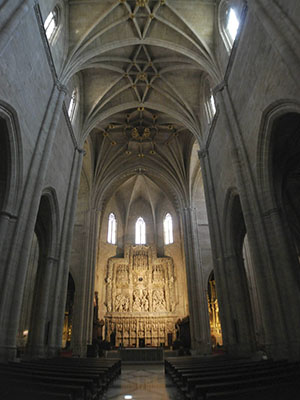
High Altar
The jewel in the cathedral’s crown, however, is its high altar: a Renaissance-style altarpiece produced in the early 16th century by the Valencian sculptor Damián Forment. Alabaster, the rock used to make it, lends the altarpiece an undeniable robustness. ‘El Cristo de los Milagros’ is found in the centre of the altar: a representation of the crucified Jesus Christ which, according to legend, miraculously started sweating during the processions of 1497, curing the population from the bubonic plague outbreak that had shook Huesca. The rest of the altarpiece, which represents the Passion of Christ, depicts three of the famous Gospel episodes.
Diocesan Museum
During your trip you can also visit the Diocesan Museum. Opened in 1945, this museum houses interesting collections of sacred art belonging to the cathedral and other temples of the Diocese of Huesca. Housed inside the old Gothic cloister, the museum is divided into three different rooms: sacred metalwork, medieval art and Renaissance and Baroque art, respectively.
























































